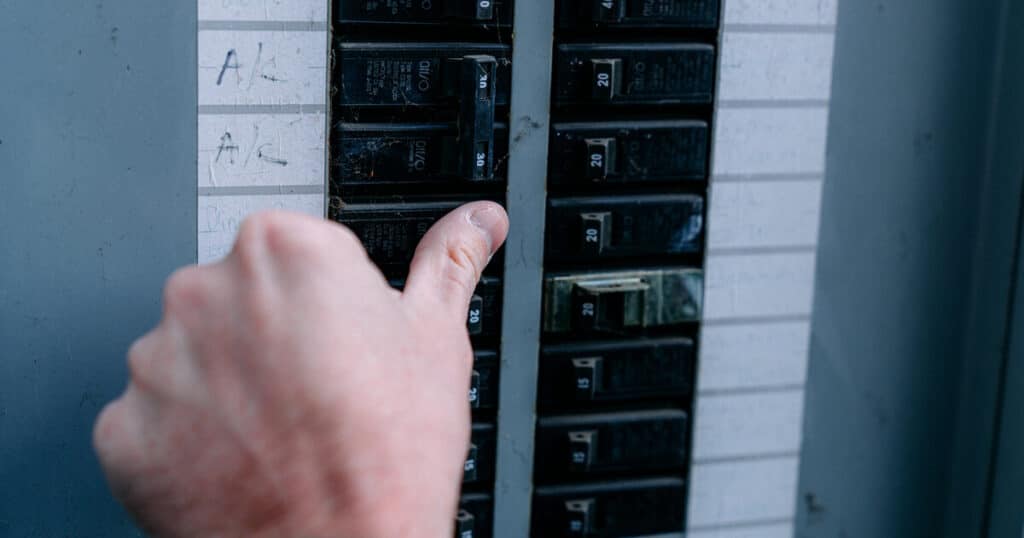How to Prime a Well Pump (Without the Headache)
4 min read • November 21st, 2025
4 min read • November 21st, 2025


If your well suddenly stops delivering water or your faucets sputter with air, your jet pump may have lost its prime. Knowing how to prime a well pump can save you time, stress, and a costly service call.
You might be wondering, “so, what does priming a pump even mean?” It’s the process of refilling the jet pump with clean water so it can create enough suction to pull water up from your well. Most pumps simply can’t function if they’re full of air. If they run dry, they won’t just turn off—they can overheat and burn out.
Thankfully, priming your pump isn’t as complicated as it sounds. Here’s how to do it safely and simply.
Head to your circuit breaker and switch off the jet pump. This protects both you and your pump from electrical accidents.

Take a few minutes to inspect your setup.
If anything looks damaged, air can get into the system and prevent the pump from holding prime. Fixing small issues now can save you a lot of frustration later.
Look for a small plug on the top of the pump. This is where you’ll pour in the water. Unscrew it carefully—sometimes pressure builds up behind it.
Grab a clean bucket or use a hose and slowly pour water into the pump until it’s completely full (you might see a bit spill over—that’s good). This helps push air out and fills the system with what it needs to create suction.
If you want to be extra thorough, let the water sit for about 10 minutes. If it drains out on its own, you might have a leak or a bad check valve that’s letting air back in. In that case, inspect your system for loose fittings or call a professional to diagnose and replace the faulty part.
Put the plug back in tightly, then turn the power back on at the breaker. You should hear the pump kick on. Open a nearby faucet and wait for a steady stream of water. The pump should shut off automatically once pressure builds up.
Don’t panic! Sometimes you need to go through the steps a second (or even third) time to get all the air out. Just repeat the process until the water flows properly.
When your pump runs dry—that is, without water—it can’t cool itself. This “dry running” creates heat and friction, which can quickly damage the motor beyond repair. That’s why priming is so important: it fills the pump with water, allowing it to do its job without self-destructing. If your system’s been off or acting up, knowing how to prime a well pump could save you from major repairs.
Read our blog: How Do Well Pumps Work to better understand your system.
Priming a jet pump means filling the pump with water to remove air and help it create suction. Most pumps won’t work if they’re full of air—they need to be primed to start pulling water from the well.
To do this, turn off the power, open the priming plug (usually on top), and slowly pour in clean water until the pump housing is full. Seal the plug, turn the power back on, and check for normal operation. You may need to repeat the process a couple of times to fully remove trapped air.
That depends on how well it’s maintained—and whether it’s ever run dry. A properly installed and regularly serviced well pump can last 8 to 15 years on average. However, if a jet pump frequently loses its prime or runs dry, it can overheat and wear out faster. That’s why priming a pump is so important. For more information, read our blog: How Long Does a Well Pump Last.
If your pump motor is humming but no water is flowing, it likely means the jet pump lost its prime and is full of air instead of water. This can happen after power outages, repairs, or long periods of inactivity.
This usually means there’s a leak—often in the check valve, foot valve, or pipe fittings.

Tried priming your well pump but still no water? The fix might require more than a bucket and hose. There could be a deeper problem. According to our expert well pump technician, Rob, jet pump issues can be very difficult to diagnose.
If you live in the Baltimore, MD area, reach out to the experts at Heil Plumbing. We help Maryland homeowners troubleshoot well pumps of all types. Whether it’s a full inspection, a repair, or a full replacement, our team offers expert Baltimore area well pump services. If you’d prefer to skip the DIY, Heil Plumbing is here to help!





